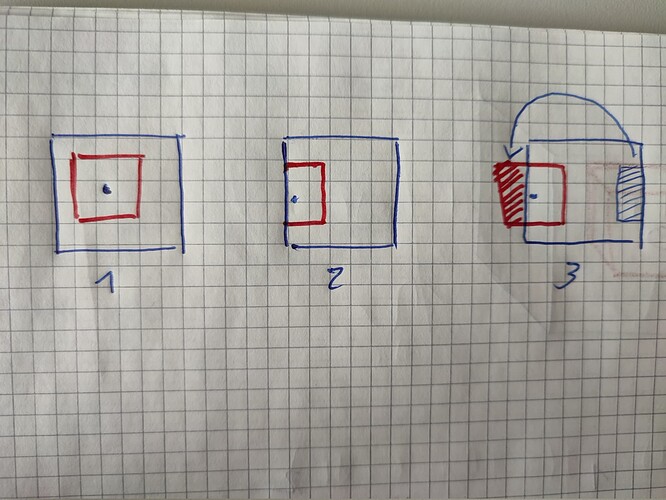Instead of slicing imagine I extract the field from a box centered on my object.
If object is in the middle cf image 1 it works fine, but if object is near border cf image 2 the box is cropped.
Because my system has periodic boundary conditions, the full box can be reconstructed from the other side of the box cf image 3. This is equivalent to duplicating the system (the box) and copying it on all sides.
I am wondering if Paraview has such such feature but it seems from an older thread (Tile filter for data with periodic boundary conditions - #3 by woodscn) that it does not
